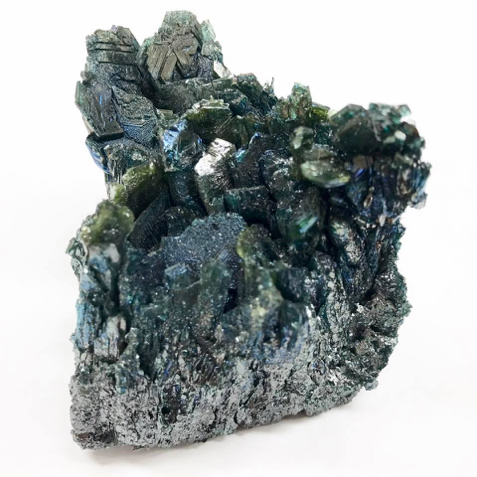#materials hardness
Finding alternatives to diamonds for drilling
Diamonds aren’t just a girl’s best friend—they’re also crucial components for hard-wearing industrial components, such as the drill bits used to access oil and gas deposits underground. But a cost-efficient method to find other suitable materials to do the job is on the way.
Diamond is one of the only materials hard and tough enough for the job of constant grinding without significant wear, but as any imminent proposee knows, diamonds are pricey. High costs drive the search for new hard and superhard materials. However, the experimental trial-and-error search is itself expensive.
A simple and reliable way to predict new material properties is needed to facilitate modern technology development. Using a computational algorithm, Russian theorists have published just such a predictive tool in the Journal of Applied Physics, from AIP Publishing.
“Our study outlines a picture that can guide experimentalists, showing them the direction to search for new hard materials,” said the study’s first author Alexander Kvashnin, from the Skolkovo Institute of Science and Technology and Moscow Institute of Physics and Technology.
Post link
2/5/18
Microstructures homework and progress on a report for my material design class about Brinell, Vickers macrohardness, and Rockwell B. There is never a dull moment.
Post link
SiC crystal, brah!
This crystal of silicon carbide (SiC) is almost as hard as diamond. In fact, moissanite, which is another name for SiC, is used as a less expensive alternative to diamonds in jewelry. Because of its hardness, SiC also is used in bulletproof vests and is added to products to provide a textured surface that won’t wear out, like the grip tape on skateboards. Scientists first discovered SiC in a meteorite in 1893—naturally occurring SiC is extremely rare on Earth. Since then, the vast majority of SiC has been made in the lab. Tokyo Institute of Technology’s Kouichi Yasuda made this 10-cm-tall crystal by applying a direct electric current to a mixture of silicon dioxide and carbon powders.
Submitted by Yoko Taka.
Do science. Take pictures. Win money. Enter our photo contest here.
Related:
High cost of loving
Who deserves credit for the first diamond synthesis
How synthesized precious gems are passing as natural
Post link



